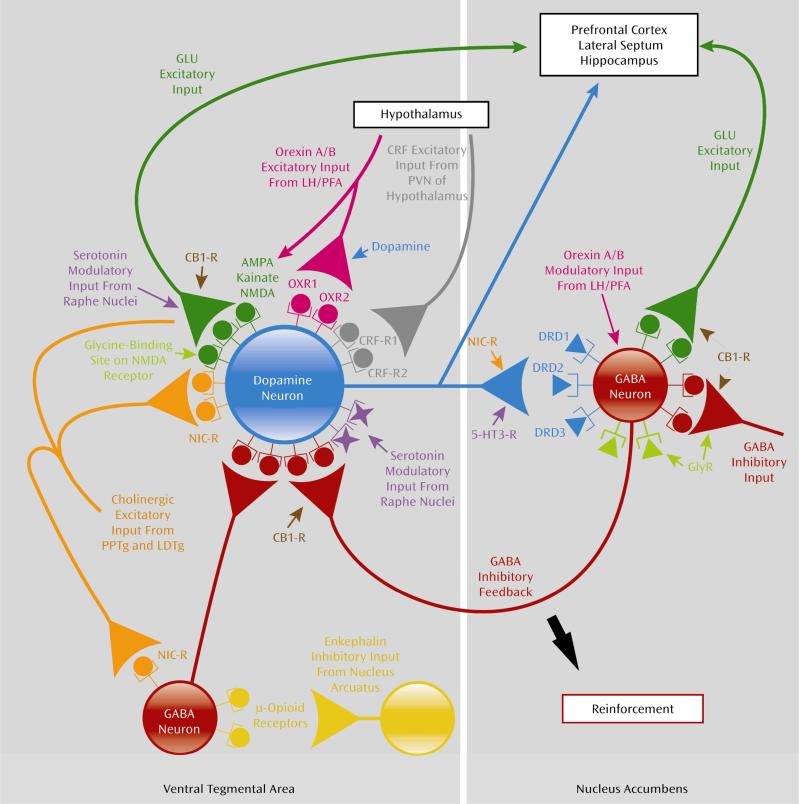Figure 1.
Neuronal pathways involved with the reinforcing effects of alcohol and other drugs of abuse. Cholinergic inputs arising from the caudal part of the pedunculopontine tegmental nucleus (PPTg) and laterodorsal tegmental nucleus (LDTg) can stimulate ventral tegmental area dopamine neurons. The ventral tegmental area dopamine neuron projection to the nucleus accumbens and cortex, the critical substrate for the reinforcing effects of drugs of abuse (including alcohol), is modulated by a variety of inhibitory [gamma-aminobutyric acid (GABA) and opioid] and excitatory [nicotinic (NIC-R), glutamate (GLU), and cannabinoid-1 receptor (CB1-R)] inputs. The glutamate pathways include those that express alpha-amino-3-hydroxy-5-methylisoxazole-4-propionate (AMPA), kainate, and N-methyl-D-aspartate (NMDA) receptors. Serotonin-3 receptors (5-HT3-R) also modulate dopamine release in the nucleus accumbens. The glycine system, orexins, and corticotropin-releasing factor also are shown. CRF-R1, CRF-R2=corticotropin-releasing factor receptors 1 and 2; DRD1, DRD2, DRD3=dopamine receptors D1, D2, and D3; GlyR=glycine receptor; LH/PFA=perifornical region of the lateral hypothalamus; OXR1, OXR2=orexin receptor types 1 and 2; PVN=paraventricular nucleus. Adapted and embellished from Johnson (46) (copyright © 2006 American Medical Association; all rights reserved).

